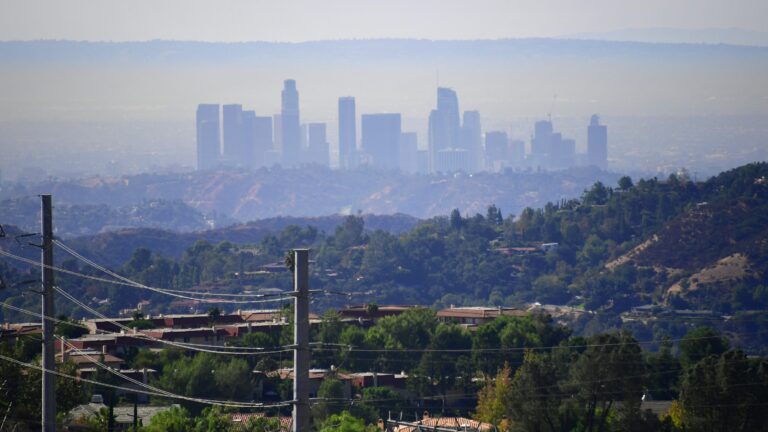States
Study Reveals Faster Aging In Black Americans In Disadvantaged Neighborhoods Compared To White Peers

Study Reveals Faster Aging In Black Americans:
Racism penetrates American culture in subtle and insidious ways. Environmental racism is a worrying aspect of this widespread issue. A new research found that Black Americans living in low-income, low-educated communities may age faster, even if their socioeconomic standing is good. This shows how much the environment affects health.
This PLOS ONE study adds to a growing body of studies linking DNA methylation (DNAm) to poor socioeconomic position and accelerated biological aging. It is commonly known that Black communities are disproportionately affected by “socioeconomic status” differences in education, income, and wealth. This research further shows how communities might affect racial disparities in hastened aging.
This research defines “weathering” as accelerated biological aging in disadvantaged areas owing to racism and poverty. It’s linked to hypertension, mental disease, and more excellent baby and maternal mortality. The research shows that environmental racism worsens Black Americans’ health, even when wealth and education are included.
Environmental Factors And The Acceleration Of Aging
A crucial part of the research examines environmental variables that promote aging, particularly PM2.5 pollution. Airborne particles smaller than 2.5 microns are called PM2.5. Researchers found that this form of pollution accelerates Black Americans’ aging more than white Americans exposed to comparable pollution levels. This calls into question the disproportionate distribution of environmental dangers and contaminants in communities.
The research also evaluated “neighborhood deprivation,” an indicator that calculates the percentage of persons with fewer than 12 years of schooling, automobile ownership, and overcrowded housing. These characteristics improve local quality of life and resource availability. The research indicated that neighborhood impoverishment explains racial inequalities in hastened aging, emphasizing the need to address systemic concerns.
It is unclear if Black people are more vulnerable to pollution or have greater unreported exposure. Lung disorders like asthma, which disproportionately afflict communities of color, might make people more susceptible to air pollution. The cumulative effects of deprivation and prejudice in these areas might increase stress, impairing air pollution tolerance.
Beyond Neighborhoods – Intersections And Future Research
The study illuminates communities and environmental elements but also shows place-based research’s limits. To properly comprehend environmental influences’ lifetime effects, longitudinal data is needed. In the context of gentrification, people who have lived in disadvantaged districts with high pollution exposure for their whole lives may age differently.
Varied areas have varied environmental, social, and cultural standards. Therefore, social systems work differently. This emphasizes the necessity for such research in other communities and racial and ethnic groupings nationwide. Through this, researchers may better understand the causes of rapid aging and health inequities.
Understanding disadvantaged group health inequalities requires an intersectional approach to study that recognizes the complex interaction between environmental, social, and structural variables. This includes healthcare accessibility and quality, various types of discrimination, and environmental racism. We must acknowledge the complex structural factors that affect Black Americans and other oppressed cultures’ aging.
This study aims to change society’s view of environmental and local factors’ health impacts. This research stresses the need to recognize environmental racism and implement policy interventions to address these inequities on a local and broader scale to improve health for everyone.
Read Also: Penn State Cancels Center For Racial Justice Amid Funding Concerns
Understanding The Impact Of Air Pollution
The research found that air pollution, especially PM2.5, accelerates Black American aging. This highlights the severe environmental inequities communities of color confront. Silent yet powerful, air pollution has far-reaching effects. It impacts air quality and health unequally across race and class.
PM2.5 particles may reach the bloodstream and deep into the lungs. Exposure to tiny particles may cause respiratory troubles, heart illness, and, as this research shows, hastened aging. These contaminants impact people differently, but Black Americans are disproportionately afflicted.
This disproportionate influence has several causes. A history of lung problems and asthma, which are more common in communities of color, may be to blame. Air pollution is more damaging to those with specific disorders. Systemic racism’s accumulated disadvantage and discrimination may also increase stress. This may reduce the body’s capacity to handle air pollution, accelerating aging.
Air pollution discrepancies need specific solutions, according to the research. Air quality restrictions and pollution reduction in Black areas are essential. Additionally, healthcare policy should prioritize respiratory disease prevention and community access to treatment. Air pollution’s effects on Black Americans must be recognized and mitigated to prevent environmental racism.
Unveiling Nuances In Exposure To Environmental Hazards
The research emphasizes environmental elements’ effects on aging, yet neighborhood exposure is complicated. Neighborhood dwellers face different ecological threats. Various factors affect exposure levels, making it a complex subject.
Outdoor time is essential. Outdoor workers and recreationalists may be more exposed to environmental contaminants. Home air conditioning and filters may also lessen outside air pollution. These features are not available to all residents.
An individual’s exposure might also depend on their work. Construction and transportation jobs in outdoor or polluted environments might increase vulnerability to dangerous chemicals. The sort of work people have in an area affects their environmental exposure.
Residence time in a community also affects exposure. Long-term residents may be exposed to more contaminants than newcomers. In gentrifying communities, new, generally wealthier inhabitants may change long-term residents’ direction.
Policymakers must evaluate environmental exposure factors to address these varied exposure patterns. This involves expanding access to air filtration and conditioning and regulating polluting businesses. Understanding exposure may help groups impacted by environmental racism get more targeted treatments.













You must be logged in to post a comment Login